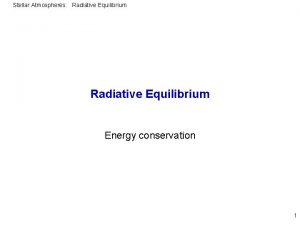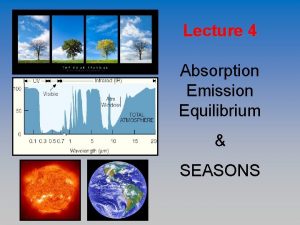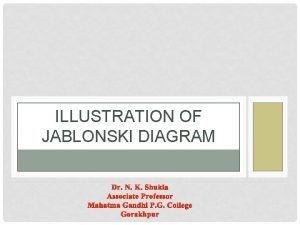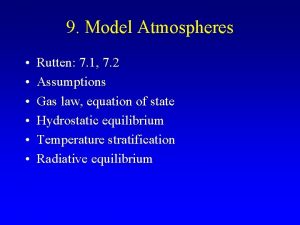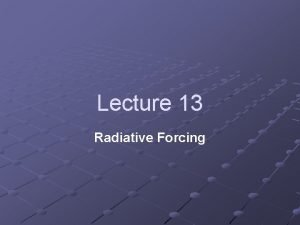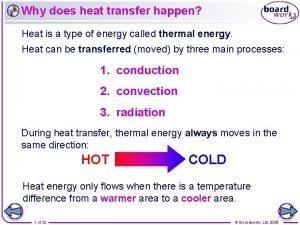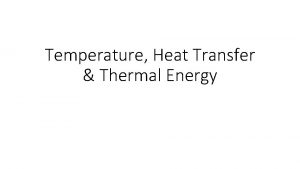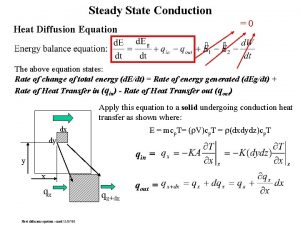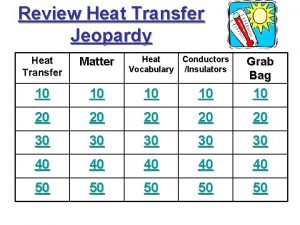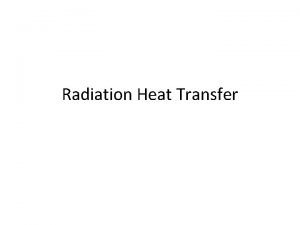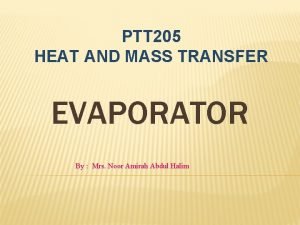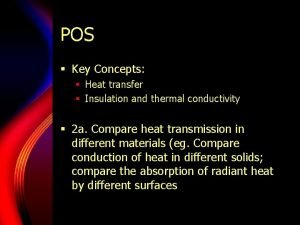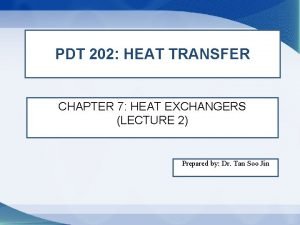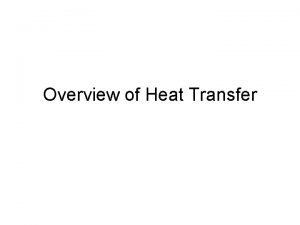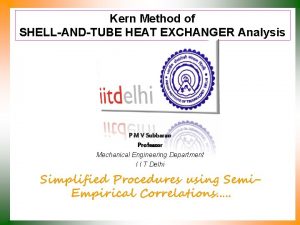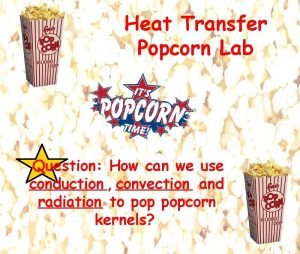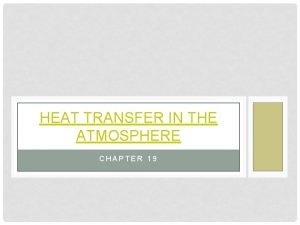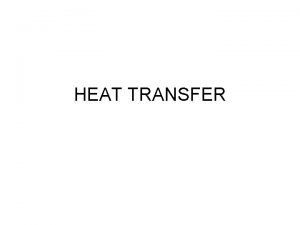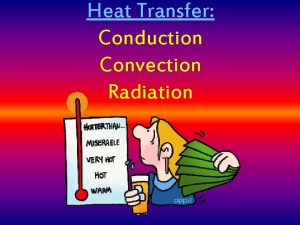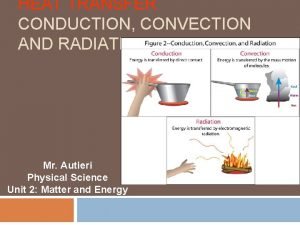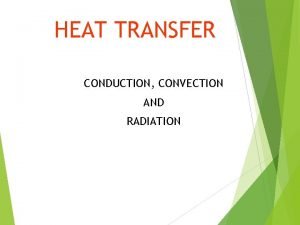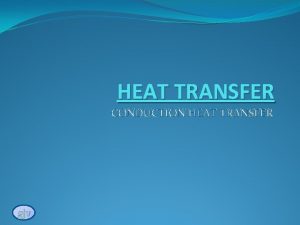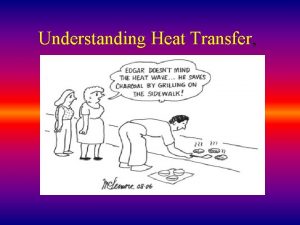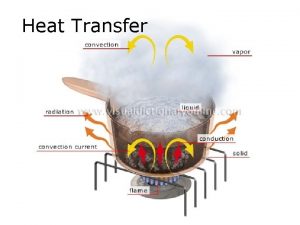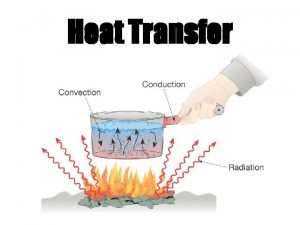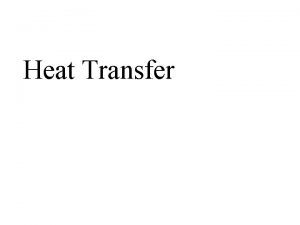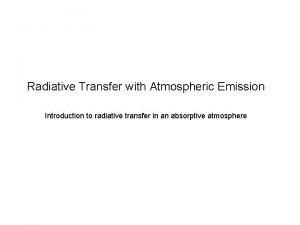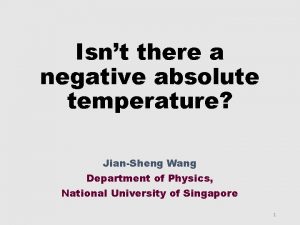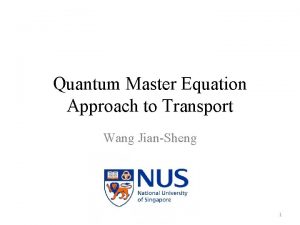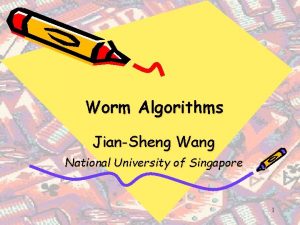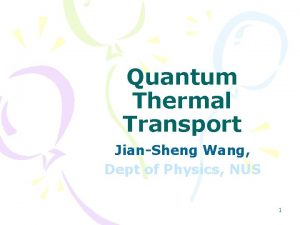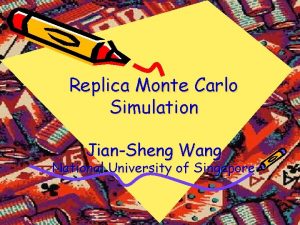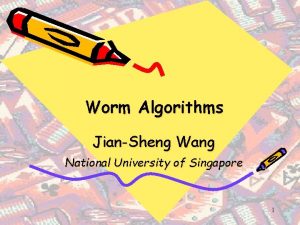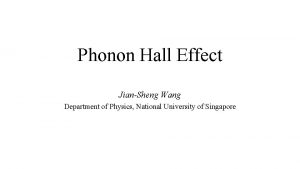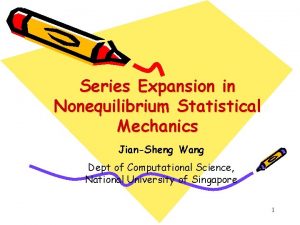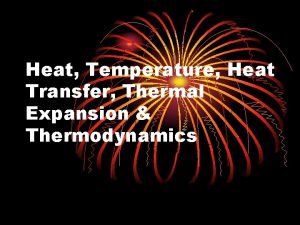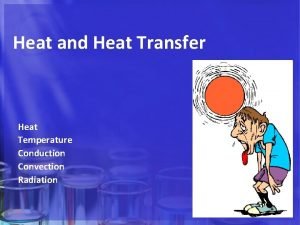Ultranearfield radiative heat transfer JianSheng WANG 1 Outline



























- Slides: 27

Ultra-near-field radiative heat transfer Jian-Sheng WANG 1

Outline • Brownian motion, Langevin equation, and generalized Langevin equation with quantum heat baths • Near field radiation problem as an open quantum system problem • Back to Langevin - turn Maxwell equations to stochastic differential equations • NEGF, Applications 2

Langevin theory of Brownian motion (1908) P. Langevin 18721946 3

Generalized Langevin Σ is known as self-energy 4

Quantum noise with Langevin dynamics • For thermal transport, Dhar & Roy, J Stat Phys (2006); JSW, PRL 99, 160601 (2007). • Thermostat to solids, Ceriotti, Bussi, Parinello, PRL 103, 030603 (2009); Dammak, Chalopin, Laroche, Mayoun, Greffet, PRL 103, 190601 (2009). • Kantorovich, et al, PRB 78, 094303 (2008); 94, 184305 (2016). 5

Black-body radiation and near-field effect Stefan-Boltzmann law: What if closer than wavelength ? 6

Near-field effect • Rytov fluctuational electrodynamics (1953) • Polder & van Hove (Pv. H) theory (1971) • Phonon tunneling/phonon polaritons (Mahan 2011, Xiong at al 2014, Chiloyan et al 2015, …) • Other mechanism? 7

Experiments Ottens, et al, PRL 107, 014301 (2011). Kim, et al, Nature 528, 387 (2015). 8

A recent experiment that does not agree with theory Heat transport between a Au tip and surface is measured, obtain much larger values than conventional theory predicts. Nature Comm 2017, Kloppstech, et al. 9

Fluctuational electrodynamics Rytov 1953: Polder & van Hove 1971: random variables 10

Rytov fluctuational electrodynamics revised, separating into longitudinal & transverse fields 11

New length scale 1011 Energy flux (W/m 2) E = Q 2/(2 C)? capacitor physics? 1/d 2 103 hc/k. BT 10 nm Distance d log scale 12

Our approach, EPL 118, 24001 (2017), ar. Xiv: 1703. 07113 • Electrons → tight-binding model (discrete) • Field → continuum (continuous) • NEGF formulation → electron G and photon D and self energies , . 13

Two quantum-dot 1 D model electron baths left photon bath right photon bath 0 1 distance d Dots or parallel plates? 14

Anti-Normal ordered radiative heat current operator We solve the electron-scalar photon coupled problem with self-consistent Born approximation (SCBA). 15

Radiative heat current (wrong!) (a) Temperatures T 0=1000 K, T 1=300 K, TL=100 K, TR=30 K, chemical potentials 0=0 e. V, 1=0. 02 e. V, and onsite v 0=0, v 1=0. 01 e. V. Area A=389. 4 (nm)2. (b) The temperature dependence of radiative heat current density. T 1=300 K and varying T 0. Wang and Peng, arxiv: 1607. 02840 16

Near-field heat current (a) Temperatures T 0=1000 K, T 1=300 K, TL=100 K, TR=30 K, chemical potentials 0=0 e. V, 1=0. 02 e. V, and onsite v 0=0, v 1=0. 01 e. V. Area A=389. 4 (nm)2. (b) The temperature dependence of radiative heat current density. T 1=300 K and varying T 0. Wang and Peng, EPL 118, 24001 (2017). 17

Negative definition vs positive definition Hamiltonian for the field φ <j> Hγ>0 Hγ<0 0 Distance d 18

gap d Lattice constant a cold hot Cubic lattice model Hopping t 19

3 D A┴ result Average Poynting vector as a function of spacing d. T 0=500 K, T 1=100 K. Model parameters close to Au. Pv. H result at carrier concentration (1/6) a-3. Wang and Peng, arxiv: 1607. 02840. 20

Meir-Wingreen/Caroli formulas Random phase approximation (RPA) Assuming local equilibrium 21

Two graphene sheets 1000 K 300 K Ratio of heat flux to blackbody value for graphene as a function of distance d, Jz. BB = 56244 W/m 2. From PRB 96, 155437 (2017), J. -H. Jiang and J. -S. Wang. 22

Metal surfaces and tip : dot and surface. : cubic lattice parallel plate geometry. From Z. -Q. Zhang, etc. ar. Xiv: 1801. 07946 and 1803. 01479. 23

Current-carrying graphene sheets 24

Current-induced heat transfer : T 1=T 2=300 K. (a) and (c) infinite system (fluctuational electrodynamics), (b) and (d) 4× 4 cell finite system with four leads (NEGF). : Double-layer graphene. T 1=300 K, varying T 2 at distance d = 10 nm, chemical potential at 0. 1 e. V. From Peng & Wang, ar. Xiv: 1805. 09493. 25

Summary • Open system, Brownian motion, Langevin equations, NEGF • A microscopic theory for near-field radiation is proposed. • 1 D two-dot model, 3 D cubic results, and currentcarrying graphene reported • Rytov’s theory need to be revised 26

Acknowledgements • Students: Jiebin, Han Hoe, Jia-Hui, Zuquan • Collaborators, Jingtao Lü, Gaomin Tang, … • MOE tier 2 and FRC grants 27
 Radiative equilibrium temperature
Radiative equilibrium temperature Radiative equilibrium temperature
Radiative equilibrium temperature Jablonski diagrams
Jablonski diagrams Radiative equilibrium temperature
Radiative equilibrium temperature Radiative forcing definition
Radiative forcing definition How to make a sandwich paragraph
How to make a sandwich paragraph Disturbance that transfers energy
Disturbance that transfers energy Heat transfer on metal
Heat transfer on metal Seven basic si units
Seven basic si units How does heat energy flow
How does heat energy flow Heat and temperature
Heat and temperature Energy balance equation heat transfer
Energy balance equation heat transfer Jeopardy
Jeopardy Example of heat transfer by radiation
Example of heat transfer by radiation Heat transfer evaporation
Heat transfer evaporation Energy transfer
Energy transfer Ntu heat transfer
Ntu heat transfer The overall heat transfer coefficient
The overall heat transfer coefficient Equivalent diameter shell tube heat exchanger
Equivalent diameter shell tube heat exchanger Ntu heat transfer
Ntu heat transfer How can popcorn be made using conduction?
How can popcorn be made using conduction? Example of radiation
Example of radiation Heat transfer on earth
Heat transfer on earth How does heat move
How does heat move Type of thermal energy transfer
Type of thermal energy transfer What is heat transfer conduction convection and radiation
What is heat transfer conduction convection and radiation Kind of heat transfer
Kind of heat transfer Examples of radiation
Examples of radiation
